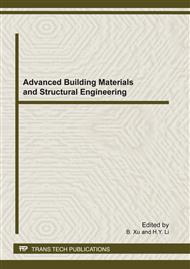p.93
p.97
p.101
p.105
p.109
p.113
p.117
p.123
p.128
A DNA-PID Controller for an Industry Robot
Abstract:
In this paper, a DNA-PID controller is proposed for a 6-DOF robot. The experimental robot system has firstly been setup. Then the PID controllers of the robot joints are designed. Due to DNA algorithm’s excellent computing characteristics, it is researched and used to set the PID parameters on line, which are the proportional coefficient, the integral coefficient and the differential coefficient. To test the controllers, several experiments are performed. The computer simulation results show that the DNA-PID controllers have faster respond speed and less overshot, which can meet the need of robot control
Info:
Periodical:
Pages:
109-112
Citation:
Online since:
February 2012
Authors:
Price:
Сopyright:
© 2012 Trans Tech Publications Ltd. All Rights Reserved
Share:
Citation:


